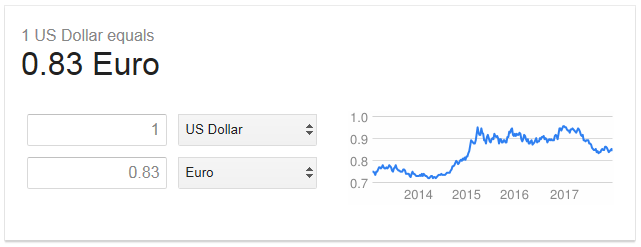It's important to know the value of
the foreign currency compared to
your own local currency. Prior
to your trip, go to Google and enter
something like 'Convert Dollars to
Euros'. This will give you a
display allowing you to enter a
dollar amount to see the
corresponding value in Euros for the
current exchange rate.
 |
This
is telling us the Dollar is weaker than
the Euro. So if something costs
.83 Euros, you will have to send 1 USD
to buy it.
- 1 USD =
.83 Euros.
- 10 USD =
8.33 Euros
- 100 USD
= 83.30 Euros
|
 You should remember the approximate
exchange values. For example,
if you see something for 8 Euros,
it's costing you approximately 10
USD. By knowing this, you can
quickly do some estimating to
determine if what you are buying is
worth the price in your own
currency.
You should remember the approximate
exchange values. For example,
if you see something for 8 Euros,
it's costing you approximately 10
USD. By knowing this, you can
quickly do some estimating to
determine if what you are buying is
worth the price in your own
currency.
 Another tip is to keep a considerable number of coins with you as you accumulate them. Not all countries have a one-dollar bill like the US, but have a 1 Euro or Pound coin. There is also a 2 Euro and 2 Pound coin. This is why having a
Coin Purse is important as it makes it easy to carry and access them when needed. Having coins makes it much easier to purchase small inexpensive items as well as pay for things such as luggage storage lockers.
Another tip is to keep a considerable number of coins with you as you accumulate them. Not all countries have a one-dollar bill like the US, but have a 1 Euro or Pound coin. There is also a 2 Euro and 2 Pound coin. This is why having a
Coin Purse is important as it makes it easy to carry and access them when needed. Having coins makes it much easier to purchase small inexpensive items as well as pay for things such as luggage storage lockers.